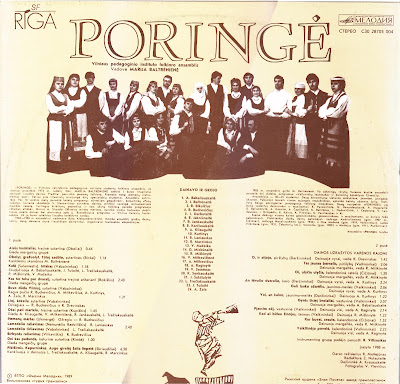Magyar Furulyások Erdélyben És Moldvában
Hungarian flutes players in Transylvania and Moldavia
Hungaroton, 1993, MK 18221
This is a copy on tape I got from a friend during the nineties. The original is a cassette published in the series called FonoFolk.
A very nice and interesting work under the direction of Juhász Zoltán himself a talented furulya player and piper who played with Muzsikás among others.
As I don't have neither cover nor booklet here are the credits found on Discogs :
| Bálványosváralja (Unguras) | |||||
| A1 | Topán György | A Juhok Nótája | |||
| A2 | Réti Imre | Keserű Víz, Nem Hittem, Hogy Édes Légy | |||
| A3 | Topán György | Máma Péntek, Holnap Szombat | |||
| A4 | Topán György | Kecskés | |||
| A5 | Réti Imre, Topán György | Jaj, De Sokat Áztam, Fáztam, Fáradtam | |||
| Magyarbece (Beta) | |||||
| A6 | Szántó Ferenc | Keserves | |||
| A7 | Szántó Ferenc | Keserves | |||
| A8 | Szántó Ferenc | Pontozó | |||
| A9 | Szántó Ferenc | Keserves És Lassú | |||
| Magyarszovát (Suatu) | |||||
| A10 | Csete Árpád | Két Lassú | |||
| A11 | Csete Árpád | Összerázás | |||
| Szék (Sic) | |||||
| A12 | Székely József | Lassú | |||
| A13 | Székely József | Csárdás És Magyar | |||
| Klézse (Cleja) | |||||
| B1 | Farkas Demeter | Tilinka-Szózat | |||
| B2 | László András | Öreg (Lapos) Magyaros | |||
| B3 | László András | Magyaros | |||
| B4 | László András | Édes Gergelem Éneke | |||
| B5 | László István | Édes Gergelem Tánca | |||
| B6 | Legedi László István | Románca | |||
| |||||
| B7 | András József | Két Keserves | |||
| B8 | András József | Kétlépésű Csárdás | |||
| B9 | András József | Egylépésű Csárdás | |||
| B10 | András József | Marosszéki | |||
| Gyimesbükk (Ghimes Faget), Hidegség (Valea Rece) | |||||
| B11 | Tímár Viktor | Kettős És Sirüleje | |||
| B12 | Karácsony Gergely, Karácsony Lázár | Csárdás | |||
| B13 | Tímár Viktor | A Bábáé | |||
| B14 | Karácsony Lázár | Keserves | |||
| B15 | Tímár Viktor | Lassú És Sebes Magyaros |
| ||||
| download.wav | ||||













